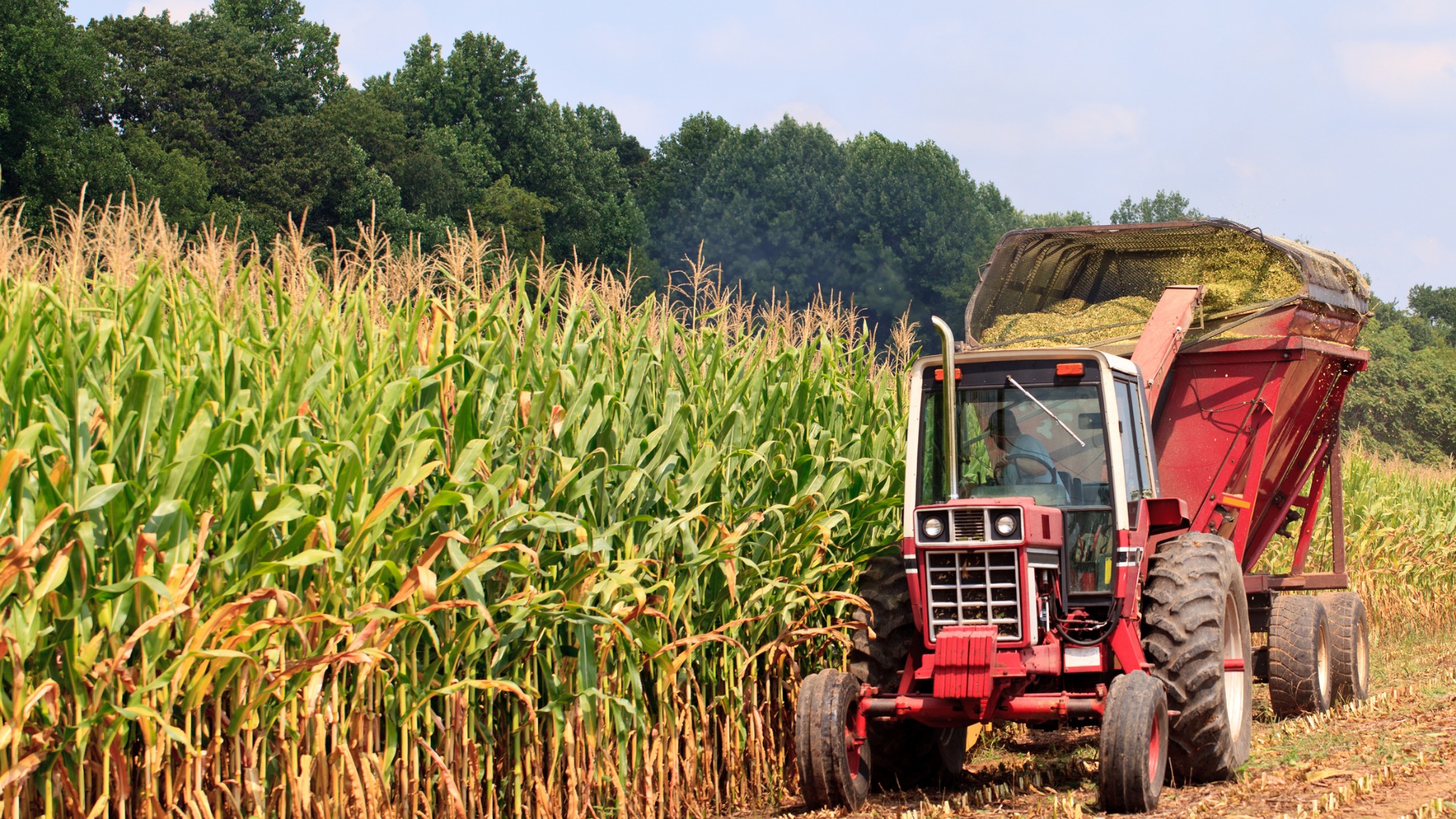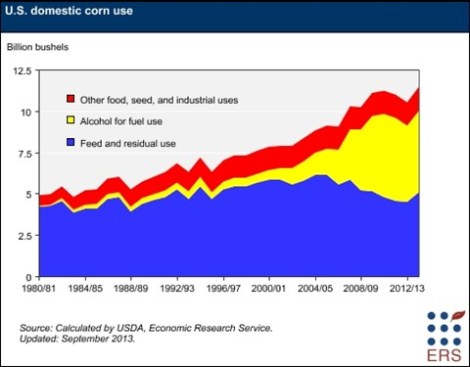Cars and cows are slurping up the largest corn crop ever grown in the U.S.
With the fall corn harvest three-quarters done, traders are anticipating a yield of about 14 billion bushels, Bloomberg reports. That exceeds forecasts and is 30 percent greater than last year. Growers are thanking agreeable weather for this year’s early and bountiful harvest, a notable shift after last year’s drought woes.
The amount of land used to cultivate corn has been growing during the past 25 years, displacing grasslands and other crops. Meanwhile, the amount of corn grown per acre has tripled since the 1950s due largely to new varieties and heavy doses of herbicides and fertilizers, which have been polluting waterways and fueling algae blooms.
But the most dramatic change in recent years has been the skyrocketing demand for corn to brew ethanol. That’s not due to a resurgent national appetite for white lightning moonshine. Rather, it’s due to the EPA’s renewable-fuel mandate, a controversial regulation requiring biofuels be blended into gasoline. The mandate was created under the Energy Policy Act of 2005, substantially expanded in 2010, and it continues to be expanded.
The spike in demand for corn to fuel vehicles threatens natural areas and human food supplies, leading many environmentalists to oppose the biofuels mandate. From an August post by the Environmental Working Group:
The harm done to consumers and the environment by the federal biofuels mandate is destined to grow worse as a result of the recent decision to once again increase the amount of corn ethanol that must be added to the nation’s gasoline supply.
The Environmental Protection Agency’s August 6 announcement underscores the need to reform the federal program known as the Renewable Fuel Standard. The law requires refiners to blend both conventional biofuels — corn ethanol — and advanced biofuels, such as soy biodiesel and cellulosic ethanol made from plant materials, into the supply of motor vehicle fuel. But with advanced biofuel technologies slow to commercialize, corn ethanol fills about 85 percent of the overall biofuels mandate.
EPA’s decision means that refiners must increase from 13.4 billion gallons to 13.8 billion gallons the amount of corn ethanol blended into gasoline this year. This is a clear sign that U.S biofuels policy is on the wrong track and must be reformed before more damage is done to the nation’s soil, water and air, and the global climate.
Environmentalists aren’t the only ones opposed to the biofuels mandate. Oil companies don’t like it either — for very different reasons, of course.






